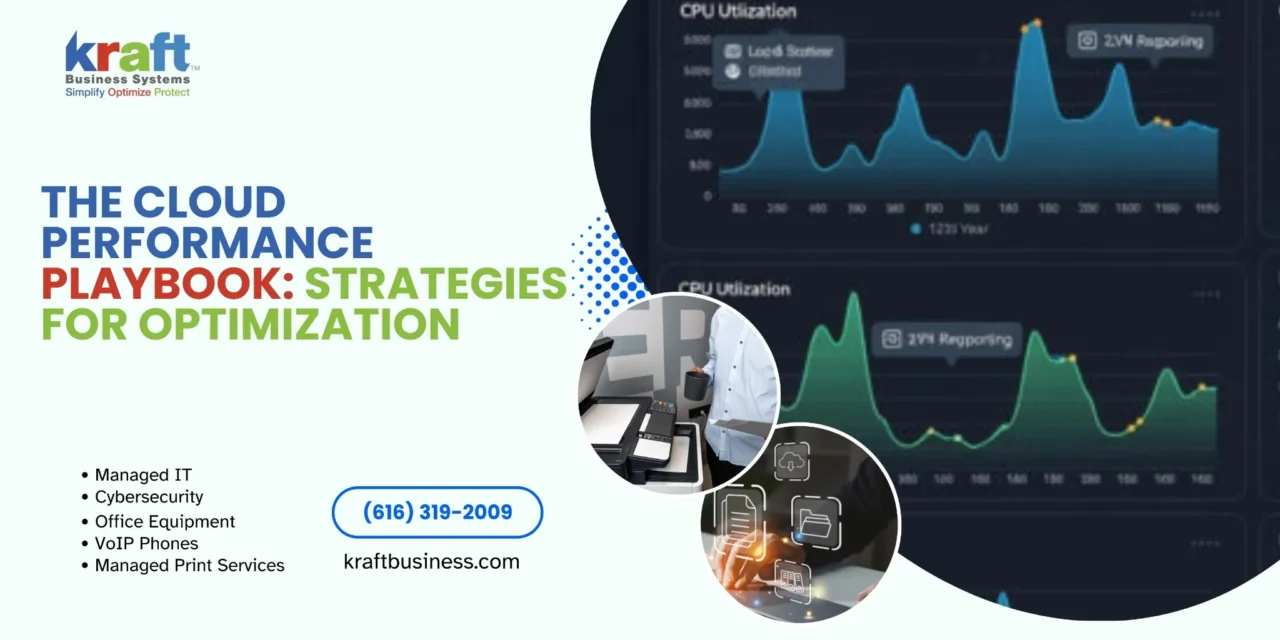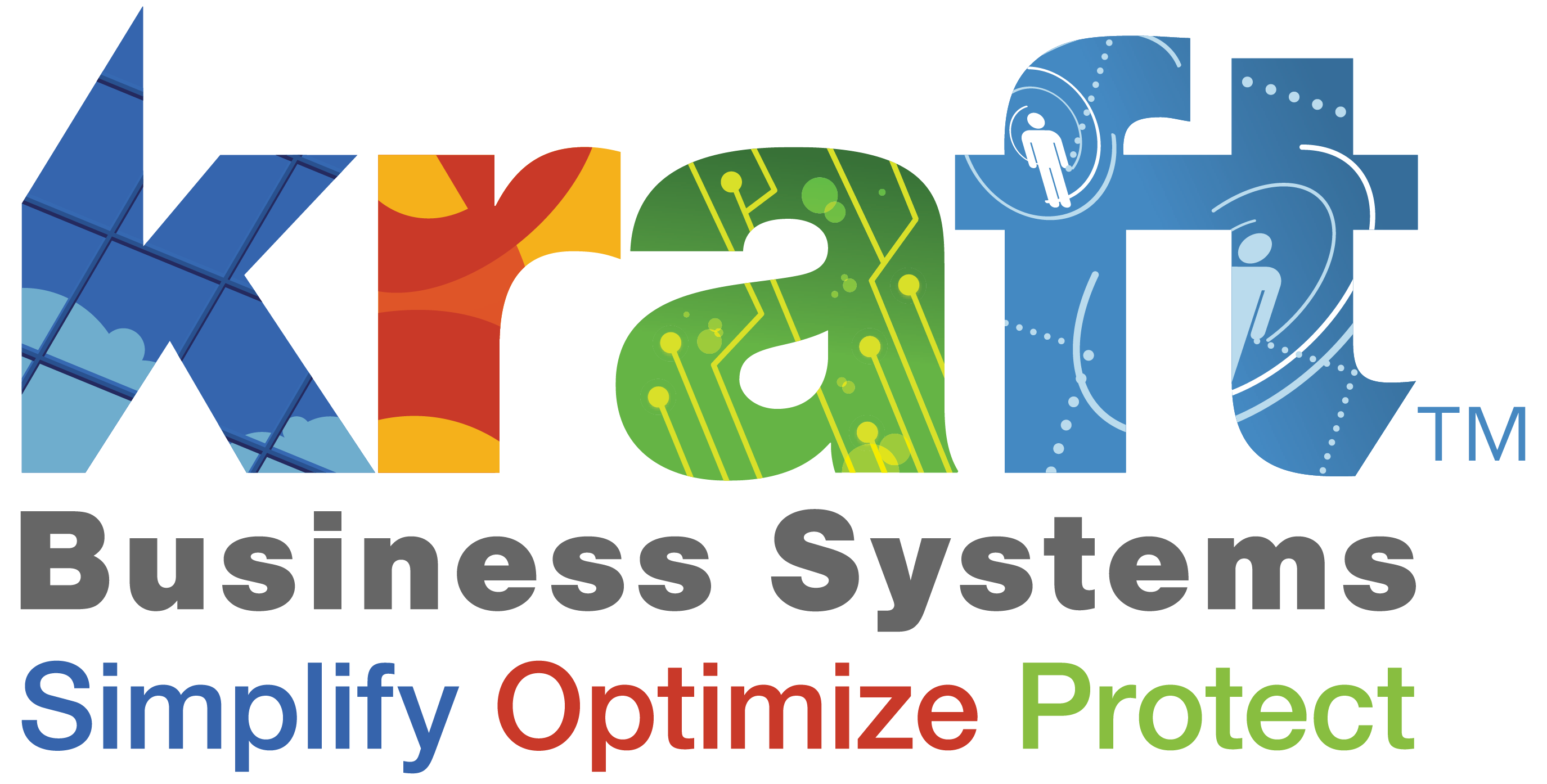How to optimize cloud performance and efficiency starts with understanding that while cloud computing promises agility, scalability, and cost savings, many businesses struggle to realize these benefits. In fact, over 90% of companies believe they are spending too much on the cloud, with public cloud spending reaching almost $600 billion in 2023.
Here’s how to optimize cloud performance and efficiency in key areas:
- Cost Management: Right-size resources, eliminate idle assets, and leverage Reserved Instances for up to 75% savings
- Performance: Implement auto-scaling, use CDNs, and optimize database configurations
- Reliability: Design redundancy across regions and implement robust disaster recovery
- Security: Strengthen access controls, encrypt data, and maintain compliance standards
- Automation: Use Infrastructure as Code and AI-driven scaling for continuous optimization
The reality is that cloud freedom often leads to technological sprawl and ballooning costs. Without proper optimization, businesses pay for unused resources, suffer from poor performance, and face security vulnerabilities.
Cloud optimization is the process of adjusting your cloud environment to improve efficiency, performance, and cost-effectiveness. It’s not a one-time project but a continuous cycle that requires periodic reassessment across four critical pillars: cost, performance, reliability, and security.
Companies that implement effective optimization strategies can cut up to half of their overall cloud spend while improving application performance and security posture. This playbook will guide you through proven strategies, essential tools, and best practices to transform your cloud environment from a cost center into a competitive advantage.
Must-know how to optimize cloud performance and efficiency terms:
Top Strategies to Boost Cloud Performance and Efficiency
The Four Pillars of Cloud Optimization: A Holistic Approach
When learning how to optimize cloud performance and efficiency, many organizations make the mistake of focusing solely on cutting costs. While saving money is important, true optimization requires a balanced approach across four interconnected areas. Think of it like tuning a car engine—you can’t just focus on fuel efficiency while ignoring horsepower, safety, and emissions.
The most successful cloud strategies find the sweet spot where your environment is cost-effective, high-performing, secure, and environmentally responsible. Neglecting any of these pillars often creates problems that end up costing more in the long run.
Cost-Effectiveness: Eliminating Waste and Maximizing Value
Let’s be honest—most companies are throwing money away in the cloud without even realizing it. The pay-as-you-go promise sounds great in theory, but in practice, it often leads to overprovisioning (buying more computing power than you actually need), idle resources (servers sitting around doing nothing), and what we like to call “zombie assets”—those forgotten resources that keep charging your credit card month after month.
It’s like paying for a gym membership you never use, except multiply that by hundreds or thousands of cloud resources. These inefficiencies add up fast, which is why so many businesses feel like their cloud bills are out of control.
Here’s the good news: companies can cut up to half of their overall cloud spend by implementing effective optimization strategies. This isn’t just about pinching pennies—it’s about freeing up budget for innovation, new projects, and growth initiatives that actually move your business forward.
The key is ensuring every dollar spent delivers maximum value. When you eliminate waste, you’re not just saving money; you’re creating financial breathing room for the things that truly matter to your business.
Performance & Reliability: Ensuring a Seamless User Experience
What good is a cheap cloud setup if your applications crawl along at a snail’s pace or crash during your busiest hours? Performance and reliability are the backbone of customer satisfaction and employee productivity. Nobody has patience for slow websites or unreliable software anymore.
Optimization in this area focuses on application responsiveness, minimizing latency (that frustrating delay when you click something and wait for it to happen), and maintaining high uptime that meets your Service Level Agreements. Your infrastructure needs to handle sudden traffic spikes gracefully—like when your marketing campaign goes viral or your sales team closes a big deal that brings in hundreds of new users.
This means building in redundancy and failover planning so your services stay accessible even when something goes wrong. Because let’s face it, something always goes wrong eventually. The goal is making sure your users never notice when it does.
A well-optimized cloud environment translates directly into happy customers, productive employees, and uninterrupted business operations. That’s worth its weight in gold.
Security & Compliance: Protecting Your Digital Assets
In the cloud, security isn’t something you can set and forget. Misconfigurations are responsible for more data breaches than sophisticated hackers, which means optimization and security go hand in hand. A messy, unoptimized environment is a security nightmare waiting to happen.
Effective optimization includes strengthening data protection, implementing solid governance frameworks, and enabling proactive threat detection. This means securing your data whether it’s sitting in storage or moving between systems, continuously monitoring for suspicious activity, and staying compliant with industry regulations.
An optimized cloud environment is inherently more secure because it eliminates unnecessary resources that could become security holes and ensures all configurations follow best practices. It’s like decluttering your house—fewer places for problems to hide.
For businesses that need comprehensive protection, exploring our managed security services can provide the expertise and monitoring needed to keep digital assets safe.
Sustainability: The Green Side of Efficiency
Here’s something many businesses don’t consider: cloud optimization is also an environmental issue. The digital sector accounts for 3-4% of global emissions, and that number is expected to double soon. Every wasted server cycle doesn’t just cost money—it consumes energy and contributes to carbon footprint.
This is where “GreenOps” comes in—the practice of reducing energy consumption and environmental impact through smarter IT operations. Cloud providers are investing heavily in renewable energy and more efficient data centers, but we need to do our part too.
By right-sizing resources, consolidating workloads, and eliminating waste, you’re not just optimizing for cost and performance—you’re contributing to a more sustainable future. Understanding the environmental impact of cloud computing adds another compelling reason to take optimization seriously.
It’s a win-win situation: what’s good for your budget and performance is also good for the planet.
Top Strategies to Boost Cloud Performance and Efficiency
Core Strategies for How to Optimize Cloud Performance and Efficiency
Now that we understand the pillars, let’s dive into the actionable, technical strategies that form the foundation of any successful cloud optimization initiative. These are the plays in our playbook that directly address how to optimize cloud performance and efficiency.
Rightsizing and Resource Management
Think of rightsizing like buying the perfect-sized shoes. You wouldn’t buy size 12 boots if you wear a size 8, yet many businesses do exactly this with their cloud resources. Rightsizing compute instances means matching your server capacity to what your applications actually need, not what you think they might need on the busiest day of the year.
The magic happens when you start analyzing CPU and memory metrics from your actual usage patterns. We often find that servers are running at 10-20% capacity most of the time, which is like heating a mansion when you’re only using one room. By adjusting these resources to match real demand, you can dramatically reduce costs without affecting performance.
But rightsizing goes beyond just compute power. We also focus on eliminating unattached storage volumes – these are like paying rent on empty storage units you forgot you had. Similarly, deleting old snapshots that have accumulated over months or years can free up significant costs. These forgotten backups pile up like old magazines in your attic, except they cost money every month.
The key is identifying underused resources before they become expensive habits. Regular monitoring helps us spot these opportunities and turn waste into savings.
Leveraging Smart Pricing Models
Cloud providers offer several pricing models, and choosing the right mix is like shopping with different types of coupons – each works best for different situations. On-demand instances are the most flexible but also the most expensive, perfect for unpredictable workloads or short-term projects.
For steady, predictable workloads, Reserved Instances (RIs) are game-changers. When you commit to using specific resources for one or three years, cloud providers reward you with substantial discounts. Key Insight: Committing to Reserved Instances for predictable workloads can yield cost savings of up to 75% compared to on-demand pricing.
Savings Plans offer similar discounts but with more flexibility. Instead of committing to specific instance types, you commit to a consistent dollar amount of usage, giving you freedom to change instance types as your needs evolve.
Spot Instances are the bargain hunters’ dream – you can access unused cloud capacity at steep discounts, sometimes up to 90% off regular prices. They’re perfect for batch processing, development environments, or any workload that can handle occasional interruptions. Think of them as standby airline tickets for your computing needs.
Architectural Modernization
Sometimes the biggest optimization gains come from rethinking how we build applications in the first place. Cloud-native design principles help us create systems that naturally use resources more efficiently.
Microservices architecture breaks large applications into smaller, independent pieces. Instead of scaling an entire application when only one feature is busy, you can scale just the parts that need it. It’s like having a restaurant where you can add more cooks to the salad station during lunch rush without hiring more dishwashers.
Serverless computing takes this further by eliminating servers entirely for certain functions. With services like AWS Lambda, you only pay for the exact time your code runs – no idle time, no wasted capacity. It’s perfect for tasks that happen occasionally or unpredictably.
Containerization packages applications with everything they need to run, making them incredibly portable and efficient. Multiple containers can share the same underlying resources much more efficiently than traditional virtual machines. When combined with orchestration platforms, you can learn more about Kubernetes architecture to see how it automates the management of these containerized applications.
Storage and Data Transfer Optimization
Data storage and transfer costs can sneak up on you like a subscription service you forgot about. The good news is there are many ways to optimize these expenses without sacrificing accessibility or performance.
Implementing storage tiers is like organizing your closet – frequently used items go in easy-to-reach places (expensive, fast storage), while seasonal items go in the back (cheaper, slower storage). Cloud providers offer hot, cool, and archive tiers with different price points and access speeds.
Data lifecycle policies automate this organization, moving data to appropriate tiers based on age and usage patterns. You can set rules that automatically archive data after 30 days or delete it after seven years, ensuring you’re not paying premium prices for data you rarely access.
Data compression and deduplication work like digital magic, reducing storage needs by eliminating redundancy and shrinking file sizes. It’s like having a filing system that automatically removes duplicate documents and compresses the rest.
Using Content Delivery Networks (CDNs) brings your content closer to users while reducing the load on your main servers. Instead of every user downloading files from your primary location, they get cached copies from nearby servers, improving speed and reducing data transfer costs.
Smart data management also means minimizing unnecessary data movement between regions or out to the internet, since data egress charges can add up quickly. By processing data where it lives and designing efficient data flows, we keep these costs under control while maintaining performance.
Top Strategies to Boost Cloud Performance and Efficiency
The Role of Automation, FinOps, and Culture in Cloud Efficiency
Technology alone isn’t enough. To truly master how to optimize cloud performance and efficiency, we need to integrate robust processes and foster a people-centric approach that sustains long-term optimization success.
Think of it this way: you can have the best tools in the world, but without the right processes and team mindset, your optimization efforts will feel like trying to fill a bucket with a hole in the bottom. The strategies we’ve covered so far are powerful, but they need the right foundation to deliver lasting results.
Automating for Peak Performance and Efficiency
Manual adjustments in dynamic cloud environments are like trying to conduct an orchestra while blindfolded—it’s simply not feasible for continuous optimization. Automation is the conductor’s baton that keeps everything in perfect harmony around the clock.
Auto-scaling groups are perhaps the most impactful automation tool in your arsenal. These systems automatically adjust the number of compute instances in response to demand, like having a smart thermostat for your cloud resources. When traffic spikes during your busy season, new instances spin up instantly. When things quiet down, unnecessary instances are removed, ensuring you only pay for what you use while maintaining stellar performance. You can learn more about Auto Scaling capabilities from major cloud providers.
Load balancing works hand-in-hand with auto-scaling, distributing incoming traffic across multiple servers like a skilled traffic controller. This prevents any single resource from becoming overwhelmed and ensures optimal utilization and response times. No more bottlenecks, no more frustrated users.
The magic really happens with Infrastructure as Code (IaC). Tools like Terraform and CloudFormation let you define and provision infrastructure using code rather than clicking through endless web consoles. This approach eliminates human error (we’ve all accidentally provisioned a massive server when we meant to select the small one), makes deployments consistent, and allows you to scale infrastructure up or down with confidence.
For organizations running development, testing, and staging environments, scheduled automated shutdowns are a game-changer. These environments rarely need to run 24/7, so we implement smart schedules that shut them down during off-hours—nights, weekends, and holidays. It’s like having an energy-conscious office manager who remembers to turn off the lights when everyone goes home.
The cutting edge of automation involves AI and ML for predictive scaling. These advanced solutions analyze historical usage patterns and predict future demand, allowing your infrastructure to prepare for traffic spikes before they happen. It’s like having a crystal ball that helps you stay one step ahead of your users’ needs.
Embracing FinOps: How to Optimize Cloud Performance and Efficiency with Financial Accountability
FinOps isn’t just another tech buzzword—it’s a cultural practice that brings financial accountability to the variable spend model of cloud computing. Think of it as creating a common language between your Finance, Technology, and Business teams so everyone can have meaningful conversations about cloud investments.
The beauty of FinOps lies in its collaborative approach. Engineers start understanding the cost implications of their architectural decisions (that extra-large database instance might not be necessary after all). Finance teams gain insight into technical spending patterns instead of just seeing mysterious line items. Business leaders can finally connect cloud investments to actual business value and growth.
Cost allocation and tagging form the backbone of effective FinOps. By implementing a robust tagging strategy, you can categorize and track cloud costs by project, department, application, or owner. It’s like having detailed receipts for every cloud purchase, giving you the granular visibility needed to understand where every dollar goes.
Showback and chargeback models take this transparency a step further. Showback provides teams with clear visibility into their cloud consumption and associated costs without directly charging them—it’s like showing someone their electricity usage to encourage conservation. Chargeback goes further by directly billing departments for their cloud usage, creating stronger incentives for cost-conscious behavior.
This approach enables real-time, data-driven decisions that balance speed, cost, and quality. If you’re interested in formalizing your organization’s FinOps journey, you can Get Certified in FinOps.
Building a Culture of Cost Awareness
Beyond tools and processes, the most impactful change comes from fostering a deep-seated culture where everyone feels ownership over cloud efficiency. Cloud optimization isn’t just an IT problem—it’s a shared responsibility that requires everyone’s participation.
The shared responsibility model extends beyond security into cost management. While your cloud provider manages the underlying infrastructure, your team controls how those resources are consumed. Every developer who spins up a server, every analyst who runs a data query, and every project manager who plans a deployment impacts your cloud costs.
Training and education form the foundation of this cultural shift. We invest in comprehensive programs that help developers design cost-efficient architectures and teach project managers how to incorporate cloud costs into planning and budgeting. When your team understands the “why” behind optimization practices, they become natural advocates for efficiency.
Dashboards for visibility put this knowledge into action by providing easy-to-understand, real-time views of cloud spend, utilization rates, and optimization opportunities. When engineers can see the immediate cost impact of their decisions, they naturally start making more thoughtful choices.
Establishing a Cloud Center of Excellence (CCoE) creates a dedicated group focused on guiding cloud adoption and optimization across your organization. This cross-functional team becomes your internal experts, disseminating best practices, standardizing processes, and driving continuous improvement.
The goal isn’t to create a culture of fear around cloud spending, but rather one of empowerment and awareness. When your engineers have access to cost data and understand how their decisions impact the bottom line, they become your strongest allies in achieving sustainable cloud savings.
Top Strategies to Boost Cloud Performance and Efficiency
Tools and Measurement: Putting Your Optimization Plan into Action
The journey to master how to optimize cloud performance and efficiency isn’t complete without the right tools and a clear measurement strategy. Think of this as equipping your team with both a compass and a map—you need to know where you’re going and how to track your progress along the way.
Essential Cloud Optimization Tools
Navigating the cloud optimization landscape can feel overwhelming with the sheer number of available tools. The good news? You don’t need every tool under the sun. What you do need is a strategic approach that combines the right mix of native provider capabilities with specialized third-party solutions.
Every major cloud provider offers powerful built-in tools that serve as your starting point. AWS users can leverage AWS Cost Explorer for detailed cost visualization and forecasting, while AWS Trusted Advisor acts like having a consultant built right into your dashboard, offering recommendations across cost, performance, security, and reliability. AWS Compute Optimizer takes this further by analyzing your actual usage patterns and suggesting optimal resource configurations.
Azure environments benefit from Azure Advisor, which provides personalized recommendations across all optimization pillars, and Azure Cost Management + Billing for comprehensive spend tracking. Google Cloud users can tap into GCP Cost Recommender for rightsizing suggestions and Google Cloud Billing reports for granular expenditure insights.
While these native tools are incredibly powerful, they each live in their own ecosystem. If you’re running a multi-cloud environment or need more advanced analytics, third-party cost management platforms bridge these gaps beautifully. These solutions provide unified visibility across all your cloud providers, advanced analytics that native tools might miss, and automated recommendations that can save your team countless hours of manual analysis.
Don’t forget about performance monitoring tools in your optimization toolkit. Solutions like Dynatrace or New Relic dive deep into application performance, helping you spot bottlenecks, latency issues, and resource inefficiencies that directly impact user experience. After all, what good is a cost-optimized application if it’s too slow for your customers to use?
Measuring ROI and Tracking Success
Here’s where the rubber meets the road—proving that your optimization efforts are actually working. Without proper measurement, you’re essentially flying blind, unable to demonstrate value to stakeholders or identify areas that need more attention.
Key Performance Indicators (KPIs) form the backbone of your measurement strategy. Focus on metrics that tell a complete story: cloud spend as a percentage of revenue, cost per customer, resource utilization rates across CPU and memory, application response times, and error rates. These indicators help you balance the financial and operational aspects of optimization.
Understanding your Total Cost of Ownership (TCO) requires looking beyond the monthly cloud bill. Factor in compute, storage, networking, data transfer costs, and the often-overlooked management overhead. Compare your TCO before and after optimization initiatives to quantify your success.
Unit economics provide perhaps the most business-relevant perspective on your optimization efforts. Breaking costs down to per-transaction or per-active-user metrics helps connect technical improvements to business outcomes. When you can show that your cost per customer transaction dropped by 30% after rightsizing your database instances, that’s a story everyone from engineering to the C-suite can appreciate.
It’s crucial to distinguish between cost savings (reducing current spend) and cost avoidance (preventing future unnecessary expenses). Both contribute significantly to your bottom line. That proactive rightsizing project might not show immediate savings, but it prevents the expensive scaling mistakes that would have cost you dearly during the next traffic spike.
Regular reporting keeps everyone aligned and demonstrates the tangible benefits of your how to optimize cloud performance and efficiency initiatives. Share these metrics transparently with stakeholders across finance, engineering, and business teams to maintain momentum and support for ongoing optimization efforts.
Common Pitfalls to Avoid
Even the most well-intentioned optimization efforts can go sideways. Learning from others’ mistakes can save you time, money, and headaches down the road.
Analysis paralysis is surprisingly common in cloud optimization. While data is absolutely crucial, spending months analyzing every possible optimization without taking action defeats the purpose. Sometimes a good decision implemented today beats a perfect decision that never gets off the ground. Set reasonable analysis timeframes and commit to acting on your findings.
The trap of focusing only on cost while ignoring performance, reliability, and security can backfire spectacularly. That aggressive downsizing might save money initially, but if it leads to application crashes during peak usage, you’ll pay far more in lost revenue and customer trust. Optimization is about finding the sweet spot across all four pillars.
Lack of governance will undo your optimization efforts faster than you can implement them. Without clear policies, consistent tagging standards, and accountability measures, resource sprawl and inefficiencies creep back in. Establish governance frameworks early and stick to them.
Perhaps the biggest mistake organizations make is treating optimization as a one-time project. Cloud environments are living, breathing ecosystems. Workloads evolve, usage patterns shift, and pricing models change. What’s optimized today might be wasteful tomorrow. Build optimization into your regular operational cadence rather than treating it as a quarterly fire drill.
Finally, tool sprawl can create more problems than it solves. Adopting every shiny new optimization tool without a cohesive strategy leads to complexity, integration nightmares, and ironically, a more fragmented view of your environment. Choose tools that complement each other and align with your team’s capabilities and workflows.
By staying vigilant about these common pitfalls, you’ll set yourself up for sustainable, long-term optimization success that delivers real business value.
Top Strategies to Boost Cloud Performance and Efficiency
Frequently Asked Questions about Cloud Performance and Efficiency
What is the first step in cloud optimization?
Think of cloud optimization like organizing a cluttered garage – you can’t clean what you can’t see! The first and most critical step in how to optimize cloud performance and efficiency is gaining complete visibility into your current cloud environment.
This means using cloud-native tools (like AWS Cost Explorer or Azure Advisor) or third-party platforms to understand your complete inventory, resource utilization patterns, and spending across all accounts and services. You need to know what virtual machines are running, which storage volumes are attached (or forgotten), and where your money is actually going each month.
Without this foundational understanding, any optimization efforts would be like trying to fix a car with the hood closed. You might make some noise, but you won’t solve the real problems.
How often should we review our cloud environment for optimization?
Here’s the thing about how to optimize cloud performance and efficiency – it’s not a “set it and forget it” situation. Your cloud environment is like a garden that needs regular tending to stay healthy and productive.
Automated tools should run constantly in the background, monitoring for cost spikes, performance issues, and security anomalies. These digital watchdogs never sleep and can catch problems before they become expensive headaches.
For your team’s manual efforts, we recommend a three-tier approach: daily checks on any anomalies flagged by your monitoring tools, weekly reviews of key metrics and recent changes, and comprehensive strategic reviews monthly or quarterly. These deeper dives help you assess broader trends, evaluate new services, and align your cloud strategy with evolving business needs.
The key is finding a rhythm that works for your team without creating optimization fatigue.
Can cloud optimization negatively impact performance?
Absolutely, and this is where many well-intentioned teams stumble. Aggressive cost-cutting without understanding your applications can lead to poor performance, frustrated users, and costly downtime.
The goal is rightsizing, not just downsizing. It’s like buying clothes – you want them to fit perfectly, not just be the cheapest option. A development server that sits idle most of the day can probably be scaled down significantly. But your production web application serving thousands of customers? That needs careful analysis and gradual adjustments.
The secret sauce is balancing performance metrics alongside cost considerations. Monitor response times, error rates, and user satisfaction as you make changes. Start with non-critical environments, measure the impact, and then carefully apply lessons learned to production systems.
A slow website that saves you $100 per month but loses you $1,000 in sales isn’t optimized – it’s broken.
How does optimization differ between AWS, Azure, and GCP?
While the core principles of how to optimize cloud performance and efficiency remain universal – rightsizing resources, automating processes, and choosing smart pricing models – each cloud provider has its own personality and toolkit.
Think of it like cooking the same recipe in different kitchens. AWS offers Reserved Instances for long-term commitments, while Azure provides Reserved VM Instances, and GCP has Committed Use Discounts – same concept, different names and slightly different rules.
The recommendation engines also have their quirks. AWS Trusted Advisor, Azure Advisor, and GCP Recommender all offer optimization insights, but they present information differently and may prioritize different types of savings opportunities.
A successful multi-cloud strategy requires understanding each platform’s unique services, pricing models, and native tools while applying universal optimization principles consistently. It’s like being multilingual – the grammar rules might differ, but effective communication principles remain the same across all languages.
The good news? Once you master optimization fundamentals on one platform, adapting to others becomes much easier.
Conclusion
The journey to master how to optimize cloud performance and efficiency has evolved from a nice-to-have skill into an essential business discipline that can make or break your organization’s competitive edge. Think of it this way: while your competitors are still treating their cloud like an expensive utility bill they reluctantly pay each month, you can transform yours into a finely-tuned engine that drives innovation and growth.
The difference between organizations that thrive in the cloud and those that struggle isn’t just about having the latest technology—it’s about adopting a holistic approach that carefully balances all four pillars we’ve discussed. When you move beyond the temptation of simple cost-cutting and instead focus on optimizing performance, security, and financial accountability together, something remarkable happens. Your cloud environment stops being a source of budget anxiety and becomes a powerful catalyst for what’s possible.
This change doesn’t happen overnight, and it certainly doesn’t happen by accident. It requires the right strategies implemented consistently, the right tools deployed thoughtfully, and perhaps most importantly, a culture of continuous improvement that permeates your entire organization. When your developers start thinking about cost implications during design, when your finance team understands the technical drivers of cloud spend, and when your business leaders see cloud optimization as an investment rather than an expense, you’ve achieved something special.
The playbook we’ve shared isn’t just theoretical—these are proven strategies that organizations across industries use to achieve cost-effective, high-performing, and resilient cloud infrastructures. From rightsizing your resources and leveraging smart pricing models to embracing automation and building that all-important culture of cost awareness, each element builds upon the others to create lasting change.
Cloud optimization is never truly “finished.” Your business evolves, your applications grow, and cloud providers continuously introduce new services and pricing models. The organizations that succeed are those that treat optimization as an ongoing journey rather than a destination.
If you’re feeling overwhelmed by where to start or how to tailor these strategies to your unique environment, you’re not alone. Every organization’s cloud journey is different, and sometimes having an experienced guide makes all the difference. The team at Kraft Business Systems has helped countless businesses in Grand Rapids and beyond steer these waters successfully. We’d love to help you transform your cloud from a cost center into a competitive advantage. Explore our IT solutions to see how we can support your optimization journey.










